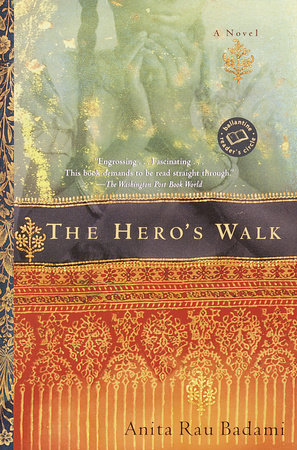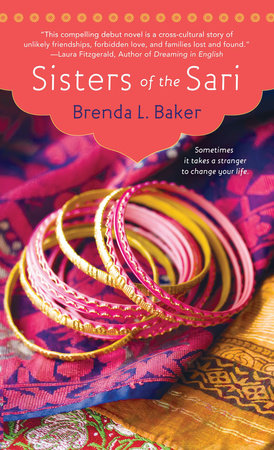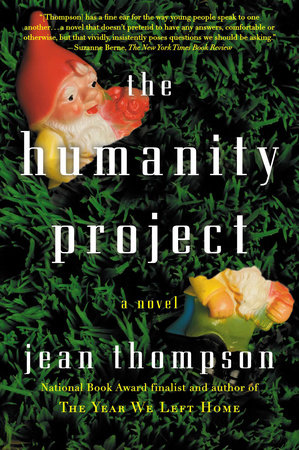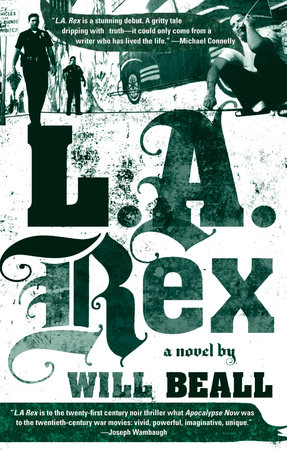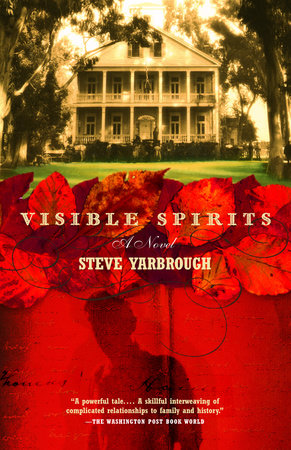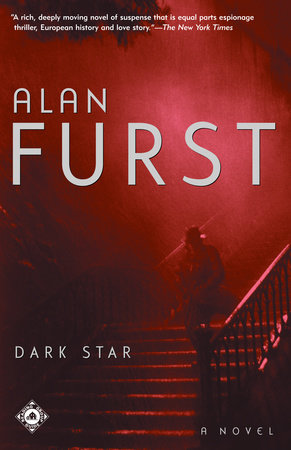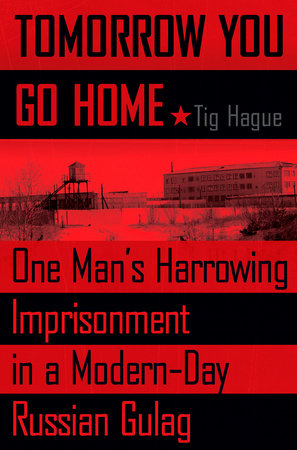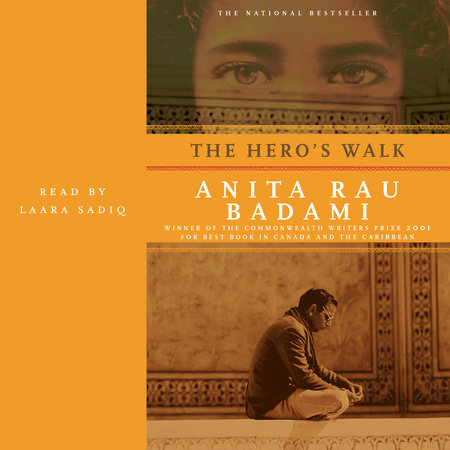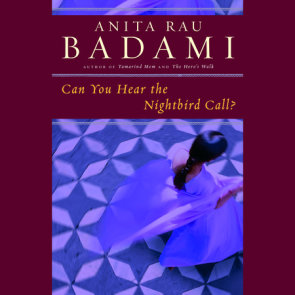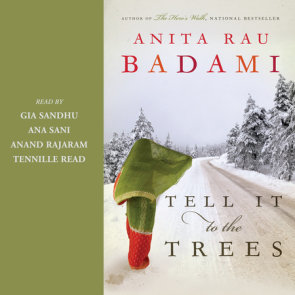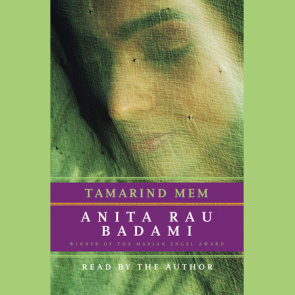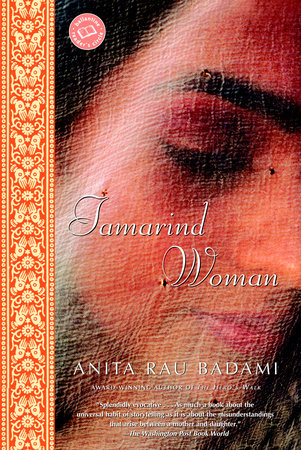Author Q&A
A Conversation with Anita Rau Badami
Eliza McCarthy has written for Elle, New York, The Washington Post, and other publications. She lives in Westchester County, New York.
Eliza McCarthy: In the book, you mention a dance-step called the hero’s walk. And, of course, the book is called that…
Anita Rau Badami: This book is my interpretation of a dance-step. The step I’m talking about is in a classical Indian dance-form called Bharat Natyam, a pretty common dance-form in India. When I was young, I noticed that the hero in dance-dramas always came in with this strutting gait. When the demons came on they used the same kind of walk, except that there were some embellishments. The demon, or the bad guy, or the villain–call him what you want to–would twirl his moustache, thump his chest, flex his muscles. And that immediately set him apart from the hero, who had a certain humility to his gait. The clown in the piece would stumble and fall and trip, so it seemed to me a fine metaphor to use for the way each of us lives his or her life. I don’t think anybody in the world is perfect. I don’t think anybody is absolutely good or bad or stupid. [laughs] Each one of us combines all those qualities in our daily lives, I think. So that’s the metaphor.
EM: Was each of your characters walking–or at least trying to walk–the hero’s walk?
ARB: I think so.
EM: By my count, you have seven important characters in the book–Sripathi, Nirmala, Ammayya, Nandana, Putti, Arun, and, of course, Maya. In your imagination, which of these characters did you begin with? Or did they come to you all at once, as a family?
ARB: Curiously enough, the book began with Ammayya and Putti. I had written a short story with these two characters years ago, and somehow the short story kept growing a little bit each year. It never seemed to end–and I didn’t know how to make it end. So it was just sitting there in my notebook, and I’d look at it and think, "Well, I’ve got to do something about this!" So when this book started, I thought that I was actually going to be writing a book about these two women. But they didn’t seem to have enough going for them for a whole novel.
At about that same time, I was reading Joseph Campbell’s The Hero With A Thousand Faces, and I was just thinking that we always connect the hero with the large, big, wonderful character who plunges into all kinds of adventures and comes back with a trophy of some sort. There’s no doubt that the hero is going to come back triumphant, and I was just thinking, "Well, what about ordinary people just leading their everyday lives?" I find just ordinary people very heroic–just the whole business of living, I think, is an act of heroism. Just to carry that hope through, you know? You try to realize those hopes, and there are all kinds of pitfalls along the way. If you make it to the end of your life relatively sane and relatively happy, then I think it’s heroic.
EM: Can you give examples of everyday heroism that any one of your characters embodies?
ARB: Well, there’s Sripathi’s wife, Nirmala. I think she is a timid woman, who has spent most of her life observing what she considers are the Rules–rules set down by family, or society, or whatever. It’s heroic that she has the courage to look at herself in the mirror, as it were, and realize that heroism isn’t simply about following rules. Sometimes it’s about doing what you think is right, at the cost of displeasing people around you. The fact that she comes to this realization, and the fact that she holds on to those principles of goodness–I think she is the only character in the book who is really a decent sort, no matter what life throws at her. She is just a good soul. And I find her heroic in a sort of daily, ordinary kind of way.
EM: What about her husband? Was one of your ideas with Sripathi’s character that it’s all too easy to get lost in the details of everyday life?
ARB: Well, actually Sripathi, more than anything else, was a man who was too taken up with the whole notion of duty, and what people in the world around thought about him. Of the characters– other than his mother, Ammayya–he was the most self-absorbed, and everything revolved around his notion of duty. As a result he made a lot of mistakes–he became this kind of unforgiving, obdurrate character. Even though he thought he was doing the right thing all the time, unlike Nirmala, he wasn’t doing it for anyone else. He was doing it for himself.
EM: Why was he that way?
ARB: He suffered humiliation when he was ten years old. His father embarrassed him and his mother by walking out with his mistress. Sripathi is trying all his life to get over that humiliation.
EM: Speaking of his mother, Ammayya, I know that she was a rather hateful character, but at the same time, I felt that the narrative came even more to life when she was around. Did you feel that way about her?
ARB: Oh, I was really fond of Ammayya! I took a great deal of pleasure working on Ammayya. She was sort of tragic–even though she was a nasty character. She had been dealt a bad hand. And I’m one of those optimists who believes that nobody is completely rotten. There is something that makes them do things that are rotten. And Ammayya was one of those. She’s been dealt nothing but disappointment and unhappiness and betrayal, so it’s not surprising that her whole nature curdled. I did enjoy working on her, because she was the one character that just let loose, did what she wanted, and said what she wanted to say.
EM: Did you ever write a draft in which Maya spoke? In the book, she doesn’t.
ARB: Yes. Actually, there was. I had a chapter in which Maya interacted with her father. I dropped it, because it just became too much. There were too many characters, and I thought, "Well, I’ll focus on this family that’s here, that’s alive." Maya can be a memory, and by her silence, I thought she’d be more powerful than if I had her actually doing things and talking.
EM: It seems like a lot of the women and girls in the story measure themselves against Maya–Putti, Maya’s daughter, and even her mother.
ARB: Right, because she was the one who got away. And she was successful by anyone’s standards. In the book, Putti thinks about it, and she thinks that Maya, even though she died young, had lived as full a life as most people who live to old age.
EM: In the book, most of your main characters are women. Were you consciously interested in exploring women’s roles in India?
ARB: Not consciously, really. But in most homes, from what I know of them, even though the woman’s place in that particular home might be in the home, still, she is queen of her house. So I like exploring the many different incarnations of women in that country, actually. You find quite a range of these women in this book–each one of them embodies a completely different personality type. And how can you write a book that’s only full of men, anyway? I mean, half the population of this world is women.
In the last fifty years, since India got its independence, you find women in every sphere of life. Whether they’re at home, or going out to work, they work as doctors, as nurses, as women who come in to clean your house, so to not include this range would be to do them a deep injustice.
EM: Speaking of writing about India, did you feel that you were writing for an Indian or a non-Indian audience? Or both?
ARB: Actually, when I was writing the book, I was just writing for the sheer pleasure of writing. Because I had a story that I wanted to explore, I had a bunch of characters I wanted to play with, and that’s why I wrote the book. I wasn’t thinking about an audience. It’s only after a book is done that I start wondering about who is likely to read it. Because you’re right, an audience here in North America is going to react to the book differently. And an audience in India will look at it differently.
EM: It’s a very textured book. There are so many details included about Toturpuram, the imaginary town, so it made me wonder: Did you do any research about Indian life, or is it all from your imagination?
ARB: This is a life that has always fascinated me. There are these narrow streets in Madras, a south Indian city, and we have some relatives who live in those little alleys and streets.
And these are people who had lots of money. They were very well-educated, but they still lived in these tiny, ugly, filthy houses on these messy streets. And they were so crazy–the whole lot of them! They lead these bizarre lives full of ritual and cling to the most peculiar old-fashioned conventions and rituals, and at the same time, they all had the latest in technology in their homes. They’d have the latest computers, the latest televisions, but that’s it–they’d be sitting on the floor, and watching these TVs and working on the computers. It was the most peculiar kind of lifestyle and it used to fascinate me. So this whole book is a recreation of those little roads and alleys, the little communities that were so different–I just loved it. It’s almost completely imagined or reconstructed from what I remember of those roads.
When I used to visit, I didn’t mind going there and sitting for hours, absorbing all the little nuances and details and things, because they were so peculiar.
EM: The Raos are Hindu, but they seem to be surrounded by a wild mixture of religions. Can you talk about the mix that you were trying to get across?
ARB: It’s something that exists on a daily basis on practically every street in India. You have people who are Hindus, Muslims, Christians–not just Catholics, but Protestants, you name it, all kinds of Christians–a hundred other religions, living side by side. And the kind of personal religion that people end up practicing is a bizarre concoction of ritual drawn from each other. So everybody ends up celebrating everyone else’s festivals. Unless, of course, someone is a real stickler, like Ammayya. There are people like her, who sort of hate everybody else around them. They are convinced that their way of life is superior or more relevant than anybody else’s.
So, on the one hand, you have that easy integration– especially people like Sripathi, who was brought up in a generation that was preoccupied with other things, such as getting over the British occupation, so religion and caste hardly mattered. Then you have younger people who just don’t care. For them, it’s more important to go out there, find a job, make a living, build a flat. Finally, there are people like Ammayya who really care about preserving the traditions, and they make a big fuss. That’s all part of the landscape, and it’s bewildering! It’s also very interesting for a writer.
EM: Do people care about caste in India today? Ammayya seemed to care about it, but for others, everything seemed more integrated.
ARB: Especially in urban areas, nobody cares so much, because you are forced to live in the same buildings. There is so, so little space. You can’t be thinking about whether you are living in a street that has only Brahmins, or in a building that has been touched only by Muslims or Christians. You just live there, because that’s the only place that you can find. So such distinctions just crumble away. There are people who maintain them, at all costs. But for the most part, it doesn’t matter.
Having said that, though, it would be totally incorrect for me to say the caste system doesn’t exist, because I think it exists in lots of villages. You find lots of atrocities committed in the name of caste. But the kind of milieu I grew up in, which was largely urban, largely middle-class, there wasn’t any space for those distinctions, really.
EM: When did you last travel to India, and what is your relationship with India?
ARB: My relationship is still very, very affectionate. That’s the country that made me what I am, it gave me a wonderful education, it gave me a lot of stories, a lot of characters. Five years ago, I was still teetering between whether to stay here [in Canada] or to go back. I was totally torn. I’d sit over here and long for all that chaos, and contradiction, and the challenges that that country represents, and I’d want to go back. But then I go back and start yearning for the silence of this place.
EM: You think of North America as silent?
ARB: Yes, I do, actually. When I say silent, I mean there seems to be a singular lack of people-noise. In India, you have people coming out of every hole you can imagine. It’s a whole different setup. People love talking to each other. You know everything about your neighbor, and the whole street in fact. So there’s a kind of sense of community that you don’t always find here. Here, you can smile at your neighbor, but you know nothing about the neighbor! And it’s bad form to be curious.
EM: Do you find your neighborhoods in Canada as fascinating as the ones in Madras, on which you based Toturpuram?
ARB: Well, the neighborhoods may not be as diverse or interesting here in Canada; they are more orderly. Where you have order, there’s not much interest! Where every tree is clipped neatly, and every hedge is perfect, the roads are always covered over, there’s little chance that anything strange could happen– as a result of the landscape, that is.
But people add color to any street, anywhere in the world. I mean, you can’t chain people down: They are who they are, and they do what they want to do. In the new book I’m working on now, which is set in Canada, I am focusing on the people, and letting them color the landscape.
